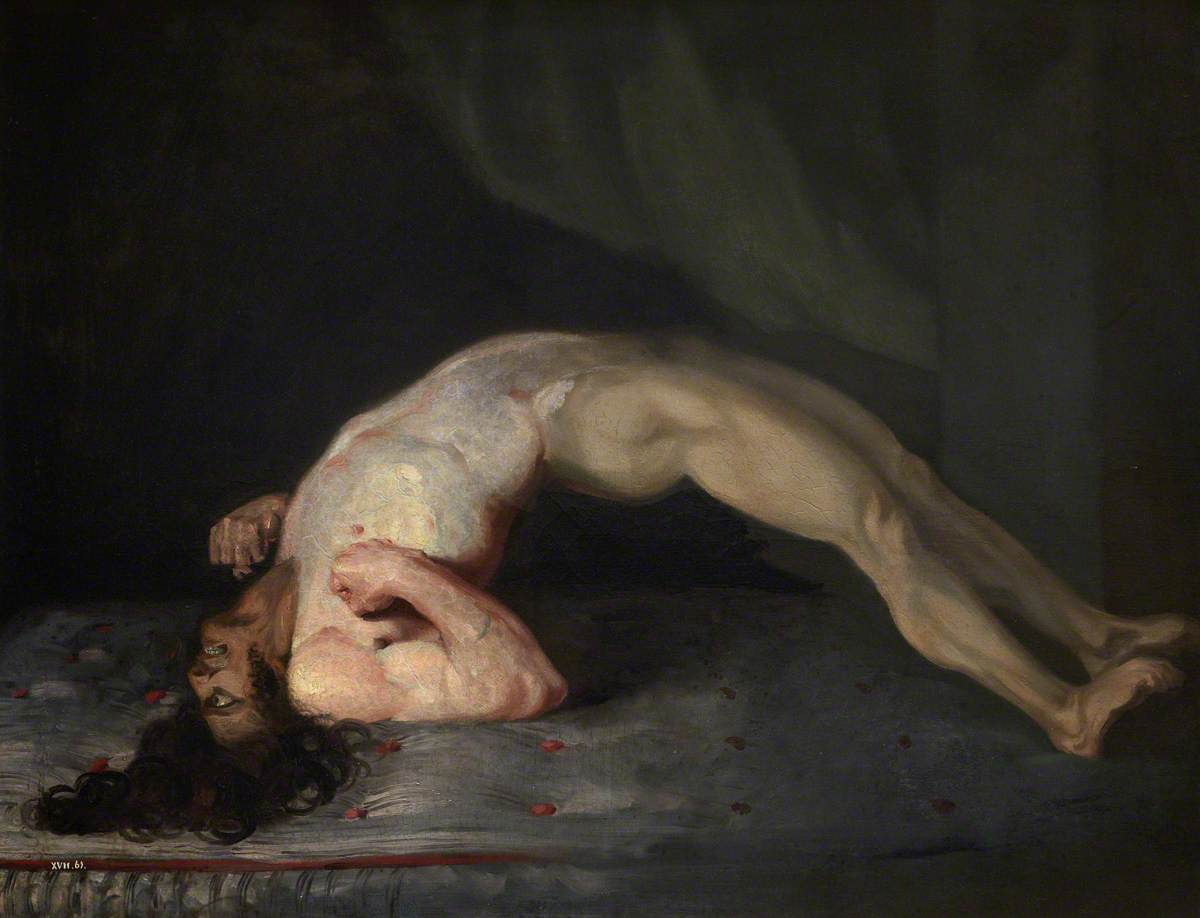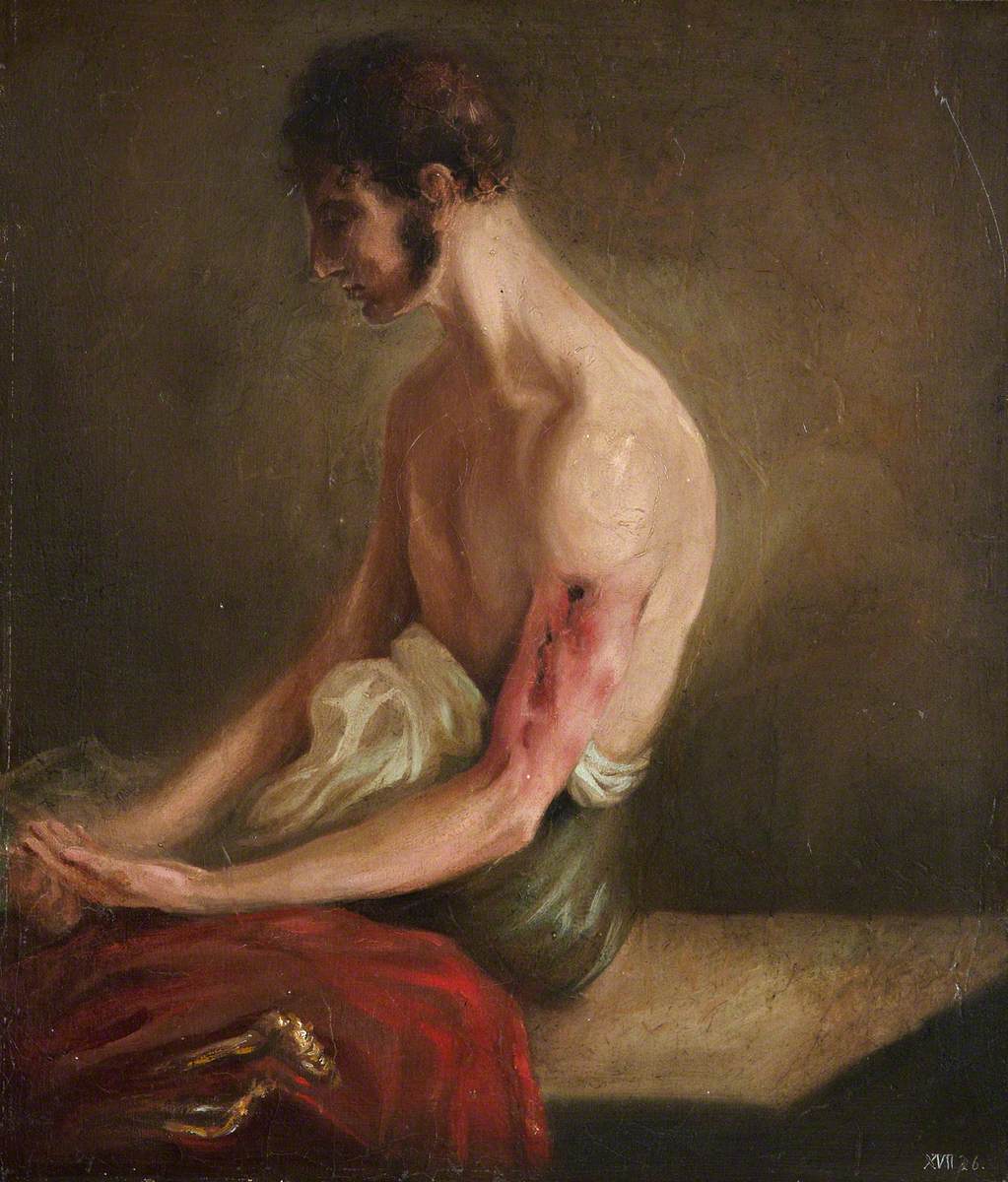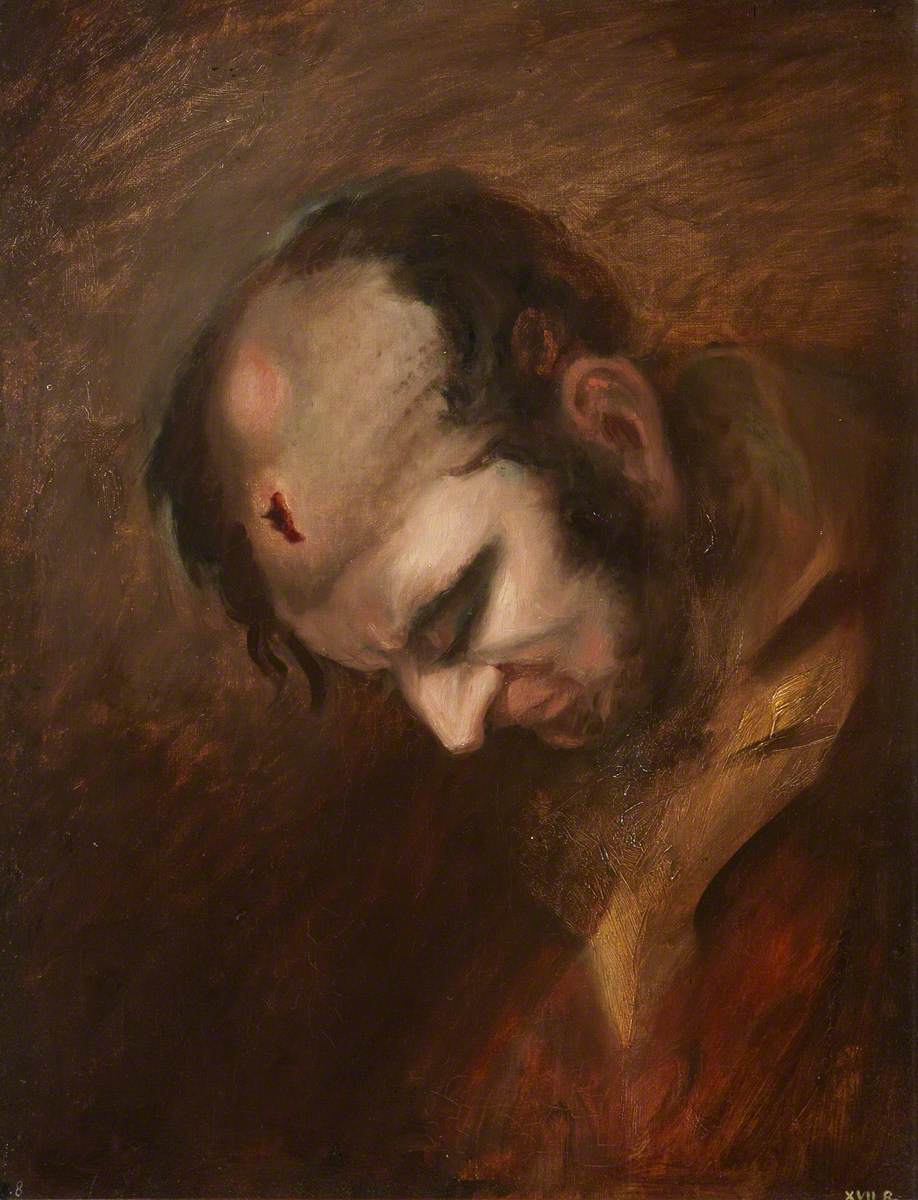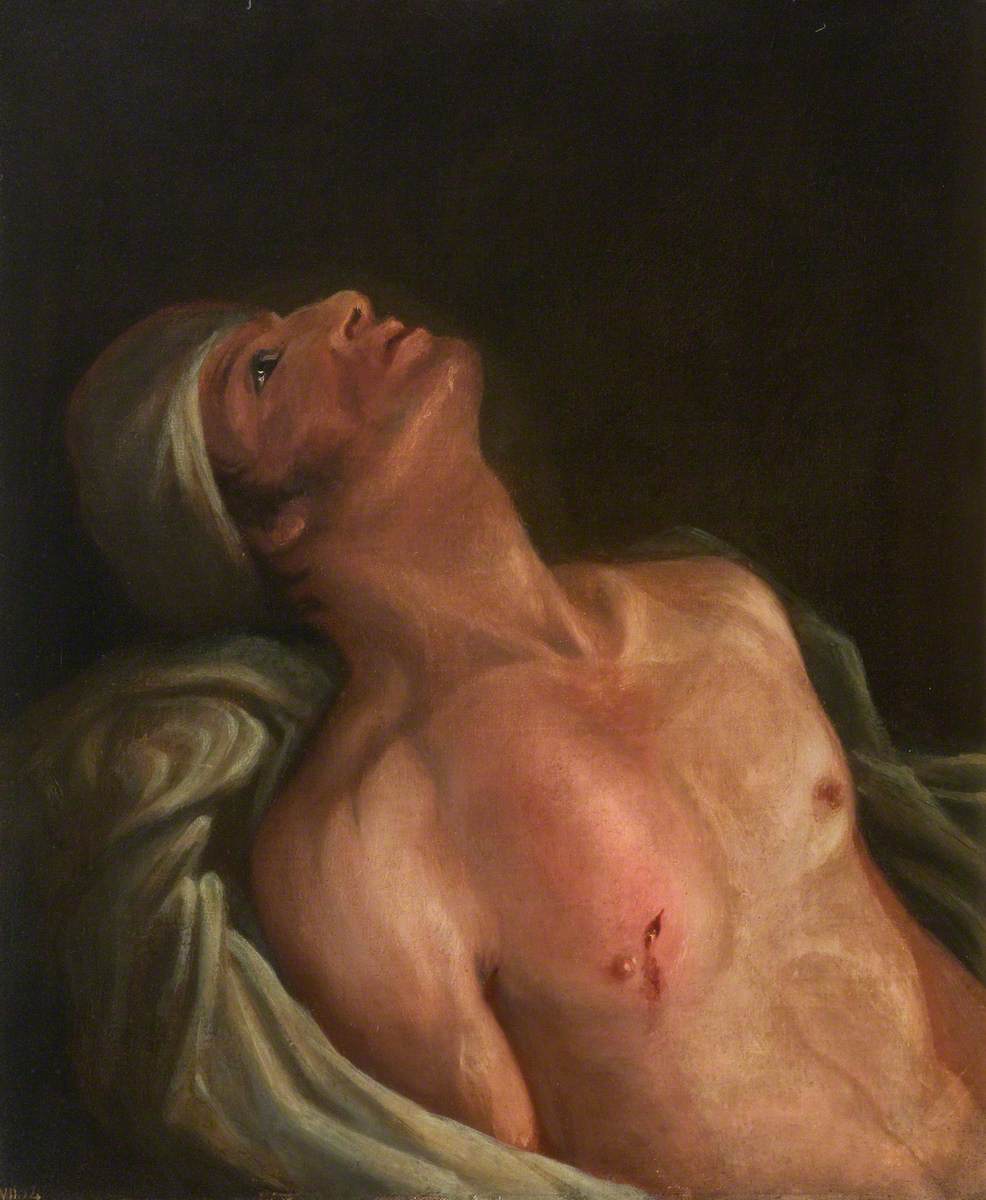The Wounded following the Battle of Corunna, Charles Bell
This post contains paintings by Sir Charles Bell (anatomist, surgeon, artist), depicting people with gunshot wounds to different parts of the body. Proceed with caution.
From Krylov, Grigoryan, & Alekberzade (link below):
The Battle of Corunna/Coruña/Corogne/Elviña was a battle in the Napoleonic Wars, occurring in Spain, between France and Britain. There was an incredible amount of people wounded, and not nearly enough trained medics, leading to guillotine amputations and wounded left dying on the battlefield. Bell, who painted the below paintings, tended to the wounds of anyone, regardless of allegiance. The circumstances were dire enough that the fatality rate was 92% (compared to 9% at a hospital, where the most severely injured would not be able to reach before they died).
The paintings included in this post are on display at the Royal College of Surgeons in Edinburgh, and are available online on Art UK.
...
Bell's paintings in the series "The Wounded following the Battle of Corunna" lay aside and under cabinets of humans-in-pieces, heart: gunshot, face: gunshot, lungs: mustard gas, skull: gunshot. There are ghosts here. Oil on canvas, dated to the 1800s, the same species of artwork that often captures the appearance of royalty. Here, the light and depth typical of the medium carves only the memory of wounds and sorrow, of downcast eyes, the terrifying spasms of tetanus.

Tetanus Following Gunshot Wounds
...
these are portraits of injuries first and foremost, inseparable from the context of pain, capturing the afflicted body secondarily. They're haunted. These are paintings capturing the expressions of people who know their lives are cut short, something I haven't seen rendered in oils, let alone before portable cameras.
As a disabled person, these paintings speak to me in a way most other works from Bell's time do not. They are raw explorations of humans as physical, biological things, as meat bearing infections, as bodies failing. I don't care much for war propaganda, but the series here speaks to me in the way that Sir John Lavery's The First Wounded in London Hospital, August, 1914 do. Drafted soldiers aren't necessarily hapless victims, but sometimes they can be, and in these eras war was an all-glory affair. these paintings instead speak the truth of war, the truth of human life. Sometimes you're laid low by circumstances greater than yourself, & sometimes that physical humbling is weeping pus-exudate and is hidden by content warnings & filters and your life becomes too gross or too sad to tell.
...
The visual artefacts and details on the paintings are laconic, yet expressive. The eyes of the wounded soldiers convey an indescribable mixture of the joy of surviving battle, the fear of the irretrievability of physical loss incurred, incessant pain of the wound, its chilling inevitability and submission before its power, moral exhaustion, the after-effects of hypovolemic shock, agony from the impending or completed treatment, anxiety and fear of death.
...



Gunshot Fracture of Shaft of Humerus ; Musket Ball Wound of Head ; Gunshot Wound of Scapula
...
Gunshot Wound of Scapula, I think, pulls my heartstrings the most. I've been there, swollen, inflamed wound dripping out over my torso, head back, staring upwards, hoping. Knowing that our circumstances turn the stomach, & people look away & pretend that none of this happens. Bell, though, didn't, & painted wound-portraits that transcend their immediate historical context for us with wounded bodies.
...
...a pillow at the head of the bed, packed with straw; a rope on one of the saved hands, with the help of which the patient is able to rise and sit; a quill in the right hand and an open stump of the left arm with bone fragments and pieces of soft tissue.
...Bell sought to remind people of the “shocking sights of woe” (Bourke 2017). The familiarisation of students with his work when studying certain aspects of general surgery and the history of medicine acquires didactic significance, while the raising of awareness and provision of accessibility for the general public play a crucial role in the proper interpretation of the unsightly realities of war.
...
thanks for reading!🪱🦀
Atom feed ; RSS feed
check out my reading list while you're here :)
...
N. N. Krylov, Y. G. Grigoryan, A. V. Alekberzade. Charles Bell as an illustrator of military trauma. History of Medicine, 2019, 6(1):32-40.